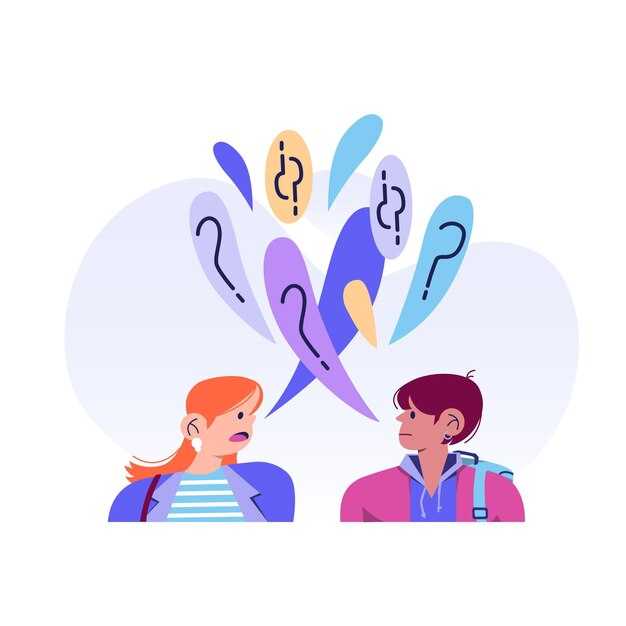You know that intoxicating period when everything finally seems aligned — he’s calling every night, sending texts: Good morning. Beautiful. Before your first sip of coffee you’re already smiling. You’re revealing things you haven’t told anyone in years. For the first time in a long while, you allow yourself to imagine this could be real. Then, as suddenly as the high came, it fades. Not physically absent, but withdrawn in the way that matters most. The calls stop. Replies to messages trickle in hours late — if they come at all. You stare at your phone, trying to connect the dots between the Wednesday when he held your hand like he never wanted to let go and the Friday when silence replaced that warmth. You replay the last exchange: Did I say something wrong? Did I push too hard? Did I miss a sign? The worst part isn’t the quiet itself — it’s that hollow ache that says, “See, you weren’t enough.” Hear this clearly: this isn’t about your worth, it isn’t proof you messed up, and it isn’t a fantasy of connection. What you just went through follows a pattern I’ve seen countless times. It has a name, a predictable structure, and roots that often reach back long before you ever met. Over the next few minutes, you’ll get a practical guide to avoidant behavior so you can stop blaming yourself, begin to understand what’s really happening, and breathe again.
Let’s pull back for a moment. You might be feeling like this pull-and-vanish routine is random — one day intimate, the next emotionally absent — and wondering whether it’s you, them, or fate. Here’s the important truth: avoidant behavior isn’t random. It’s not a coin flip or an inexplicable mood swing. It follows a pattern — a blueprint. Once you recognize that blueprint, the confusion lifts. You stop dissecting every word and action and start seeing the dynamic for what it is. I call this the emotional blueprint of avoidance, and it’s built around four recurring patterns. Spot these and the fog clears: Withdrawal and detachment; minimal contact and ghosting; avoidance of emotional conversations; and scarcity of emotional expression.
At their core, avoidant people do want connection. But as someone gets closer, an old internal alarm starts blaring. It’s not that you’re too much — it’s that closeness triggers a deep-seated sense of danger for them, and that alarm screams, “Back off. Create distance. Shut it down.” The moments that feel intimate to you — the butterflies, the easy laughter — feel like pressure to them, even when you’re not doing anything controlling. That’s why their behavior can flip so dramatically: one week you’re their refuge, the next they seem distant or emotionally flat. Before I break down the four patterns in detail, let this sink in: this is not evidence they never cared. It’s evidence they don’t know how to stay when they do care. In their nervous system, intimacy and threat have been tangled together, often since childhood. They learned that needing someone leads to pain, or that closeness risks losing themselves. Understanding this disconnect is what stops you from internalizing their withdrawal as a verdict on you.
Here’s the cheat-sheet framework for recognizing avoidant behavior in the moment:
– Withdrawal and detachment — when they go emotionally flat and quiet after moments of closeness.
– Minimal contact and ghosting — when they stop initiating and only offer crumbs to keep you hanging on.
– Avoiding emotional conversations — when they shut down or redirect whenever feelings or the future come up.
– Lack of emotional expression — when affection and verbal reassurance dry up, leaving you guessing.
We’ll unpack each pattern so you can stop getting blindsided. The power of naming the pattern is huge: it creates the emotional distance you need to stop reacting automatically. Instead of panicking, “What did I do wrong?” you’ll be able to observe, “This is pattern two showing up.” That shift halts the spiral and returns emotional agency to you. Breathe. You are not broken or unlovable. You’re about to learn the signals that the avoidance cycle is beginning so you can protect yourself before you get pulled into it again.
Pattern one: withdrawal and detachment. Picture this: things had been flowing — laughter at dinner, shared jokes, even talk of future plans. Then, as if someone dimmed the lights, their warmth fades. Their voice loses its spark, their gaze doesn’t linger, and they seem emotionally distant. What’s happening is that closeness triggers their internal alarm, and their system responds by lowering the emotional volume. They aren’t necessarily angry or plotting an exit; they’re unconsciously protecting themselves from a fear they may not even be able to name. You’re left wondering what changed — when in reality you simply crossed their threshold for intimacy. Key signs: sudden emotional flatness with no argument or clear reason. This can lead to the slow fade or abrupt vanishing act.
Pattern two: minimal contact and ghosting. Before, you got morning texts, random calls just to hear your voice, plans kept. Then the contact dwindles — sometimes to nothing, sometimes to just enough to keep you hooked: a message after days of silence, a meme with no follow-up. This is especially cruel because it leaves you guessing: are they busy? Losing interest? Should you reach out? They rarely provide enough to feel secure, but they give just enough to prevent you from walking away. Key sign: you find yourself doing all the initiating and carrying all the emotional labor, while they only reappear when the closeness that frightened them feels reduced.
Pattern three: avoiding emotional conversations. Whenever you attempt to talk about feelings — yours, theirs, or the relationship’s future — they withdraw. They change the subject, minimize your concerns, or accuse you of being overly emotional. Why? For avoidant people, vulnerability feels like a loss of control or a threat. Confronted with emotion, they feel cornered and instinctively retreat. The painful consequence is that you start altering your own behavior: tiptoeing, self-censoring, editing how much you reveal just to keep the peace. Key sign: every time you try to discuss emotions or direction, they either shut down, belittle it, or act as if you’re starting a fight.
Pattern four: lack of emotional expression. At the start, they may have shown affection, flirted, and made you feel valued. But as the bond deepens, emotional displays dry up. “I miss you” is met with silence or a subject change. Hugs feel stiff or cut short. Over time you begin to doubt whether your desires for connection are unreasonable — when you’re actually asking for basic emotional reciprocity. The reality is they may still care, but for avoidants, expressing emotion feels risky: giving someone the ability to hurt them. So they shut it down. You keep pouring in love hoping it will unlock them, but that’s rarely how the pattern shifts. Key sign: you’re constantly uncertain about how they feel because they rarely speak or show it.
Again: these patterns don’t mean you’re too much or impossible to love. They reflect survival strategies someone developed long before you showed up. The typical cycle looks like this: they draw close, feel overwhelmed, pull away, feel lonely, then return — and repeat. The power you have is recognizing the cycle. When you see it, you can step back, choose how to respond, and protect your emotional wellbeing.
Where does this wiring come from? Picture a toddler who scrapes a knee and reaches for comfort, only to be met with indifference or irritation. Over time, that child learns: when I need help, I don’t get it; vulnerability brings rejection. To cope, they stop reaching out and build a protective wall. Decades later, that wall remains. The adult sitting across from you may smile and connect, but when that old alarm triggers, the same instinct to protect the inner child kicks in: “Don’t need them. Don’t get too close.” That’s why withdrawal isn’t about you; it’s a survival response to a memory of closeness being unsafe.
There are two main variants of avoidance worth distinguishing. Dismissive avoidants erect and lock the gate — they take pride in self-reliance and distance. When intimacy increases, they shut the door, become “too busy,” or steer conversations to the superficial. It’s not necessarily disdain for you, but a protective posture where independence equals safety. Fearful avoidants, by contrast, leave the gate ajar. They crave closeness and may initially dive in, but any hint of rejection or criticism makes them slam it shut. Their behavior tends to oscillate rapidly between warmth and freeze, creating a painful push-pull cycle: they want love but fear being hurt, so they preemptively sabotage intimacy. Externally both types look similar — emotional distance — but their motivations differ: dismissive distance protects control; fearful distance protects against being broken. Knowing which you’re dealing with helps you interpret the dynamic without internalizing it. You can’t heal their wound for them, and you can’t love it away, but you can safeguard your own emotional health and decide whether the relationship pattern is one you can live with.
So what do you do when the pull-back begins? If your instinct is to fix, chase, or prove you’re safe, beware: chasing usually increases the retreat. Here’s a three-step approach that stops the spiral, preserves your dignity, and actually gives the relationship its best chance to shift toward health.
Step one: stop chasing. Repeated calls, long explanatory texts, pleading for reassurance — each attempt to close the gap often confirms their fear that relationships are suffocating. Chasing rarely brings closure and usually increases anxiety and feelings of worthlessness. To stop losing yourself, be willing to risk losing the relationship. That means no guilt-laden messages, no repeated pleas, and no showing up uninvited. This isn’t punitive; it’s removing yourself from a draining cycle. Mantra: if they need space, give it — without abandoning your own standards.
Step two: limit contact and set boundaries. Boundaries aren’t about controlling them; they’re about defining what you will accept. If they disappear for a week, don’t slip back into normal conversation as though nothing happened — name it: “I need consistency to feel secure. If you can’t do that, this won’t work.” If their messages only arrive late at night, decide not to respond after a certain hour unless it’s planned. Boundaries are clear, calm, and for you. They halt the pattern of self-abandonment and give the avoidant the chance to feel your absence — which is often what triggers awareness of what they might lose. Your absence, not your chasing, is what forces them to confront the reality of the relationship.
Step three: practice self-compassion. This is the step most people skip, and it’s why they remain stuck. When someone pulls away, it’s easy to spiral into self-blame. Instead, ask: what am I trying to get from them right now, and how can I provide that for myself? Reach out to a friend who listens, do grounding activities like walking, yoga, or journaling, and speak to yourself with the kindness you’d offer a loved one. It’s okay to miss them. Missing someone doesn’t mean you’re weak. But you must remember you are enough with or without their attention. Shifting to self-compassion changes your tone, strengthens your boundaries, and restores your emotional power.
So, when you notice the withdrawal: stop chasing, limit contact and enforce boundaries, and turn inward with compassion. This is not about manipulating them into missing you; it’s about reclaiming your center. Chasing won’t make them stay; extinguishing your own needs to keep them won’t either. The best chance for a healthy connection — with this person or someone else — comes from standing firm in your worth.
To close: if you remember only one thing, let it be this: when an avoidantly attached person pulls away after getting close, it’s not a mystery and it isn’t a judgment on your value. It’s a pattern. You now know the four signs to watch for, where this wiring often begins in childhood, the difference between dismissive and fearful avoidance, and a three-step strategy to protect yourself: stop chasing, limit contact and set boundaries, and practice self-compassion. Your role isn’t to demolish their wall; it’s to stand in your own worth whether they ever open that gate or not. You don’t need to keep proving yourself to someone not ready to receive you. You deserve a relationship where your love is met, matched, and multiplied. Breathe, stand tall, and remember: your absence will speak louder than any chase ever could. Next, you’ll learn the three stages an avoidant person typically goes through when they return and what genuinely prompts them to change.


 Why They Ghost, Vanish, and Always Come Back | Best Motivational Speech">
Why They Ghost, Vanish, and Always Come Back | Best Motivational Speech">

 7 Signs an Avoidant Partner Is Preparing to Leave (The Final One Hurts Most)">
7 Signs an Avoidant Partner Is Preparing to Leave (The Final One Hurts Most)">
 Why Relationships Only Work When You Have Boundaries (4-Video Compilation)">
Why Relationships Only Work When You Have Boundaries (4-Video Compilation)">
 Relationships are DOOMED without THIS!!">
Relationships are DOOMED without THIS!!">
 When the Anxious Partner Finally Breaks Free from the Avoidant">
When the Anxious Partner Finally Breaks Free from the Avoidant">
 Cheating isn’t the ONLY way we BETRAY each other.">
Cheating isn’t the ONLY way we BETRAY each other.">
 Avoidants Always Crumble When You Finally Understand This | Jordan Peterson Motivational Speech.">
Avoidants Always Crumble When You Finally Understand This | Jordan Peterson Motivational Speech.">
 Subtle Signs they’re actually a Narcissist">
Subtle Signs they’re actually a Narcissist">
 The 4 Uncomfortable Truths About Trauma You NEED To Hear">
The 4 Uncomfortable Truths About Trauma You NEED To Hear">
 5 Ways a Lack of Attunement Keeps You From Connecting">
5 Ways a Lack of Attunement Keeps You From Connecting">
 Relationships CAN’T succeed without THIS">
Relationships CAN’T succeed without THIS">